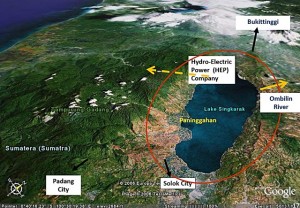By Meine Van Nordwijk, originally published at Agroforestry World Blog
 Pubs and coffee shops are multi-layered watersheds of information flows. Is one more effective than the other for climate negotiations?
Pubs and coffee shops are multi-layered watersheds of information flows. Is one more effective than the other for climate negotiations?
At a recent ‘shared learning’ event at the Bogor, Indonesia campus of the World Agroforestry Centre (ICRAF), we reviewed the different ways knowledge and understanding of watershed functions (and the roles of forests and trees in those) can best be linked to negotiations among stakeholders for real change and action. The choice focussed on PUB versus Coffee Shop.
Hydrologists of the world have worked for a decade or so on the PUB program: ‘predicting ungauged basins’. Realizing that intensively measured and monitored basins will always remain in a minority and that explicit ways are needed to make inferences for data-sparse environments, they tested how good current models really were when used beyond their calibration range. The answer was: not as good as we had hoped. It isn’t clear, however, whether this also means not good enough to be of any use at all.
An alternative to the PUB is the Coffee Shop. A key feature of the Rapid Hydrological Appraisal (RHA) method that ICRAF developed a decade ago is an explicit focus on three knowledge systems: local, public/policy and science. A good start in gaining local knowledge is to spend time in the coffee shops that are popular throughout Sumatra, Indonesia and where all aspects of life are discussed albeit mostly among men.
In many parts of the world, local people are convinced that forests, trees and rainfall are related in more than one way: forests and trees not only depend on rainfall but help to generate it. Scientists confronted with this perspective have always denied such effects or at best been ‘agnostic’, as it seemed impossible to find evidence in their data.
New evidence on credible mechanisms for forest and tree effects on rainfall is, however, emerging. It could revolutionize current climate negotiations, which focus on greenhouse-gas emissions. A researcher who has picked up such ideas in the coffee shops, however, will not be taken seriously by the modellers unless he’s been to the pub with them and earned their trust and respect.
At the shared-learning seminar, we benefitted from the ten-year study of Kevin Jeanes that was the basis of his PhD thesis at the Australian National University, following up on ideas that emerged in the first RHA we ever did, keeping the focus on Lake Singkarak in West Sumatra. Kevin’s overall conclusions were in support of the ‘soil-based forest hydrology’ perspective, where it is changes in the infiltrability of the soil in response to land-use change, rather than changes in tree cover as such, that dominate responses at the level of stream flow. Restoration after compaction is a slow process and conserving existing forest is more effective than replanting degraded soils.
New to his longer-term study is a more explicit consideration of spatial scale: comparing five nested scales, his research showed important shifts in relative emphasis on phenomena and explanatory factors between scales plus an expanded analysis of the comparative advantages and performance of social survey, data-based and model-based hydrological analyses under data-sparse conditions.
Read full blog here











